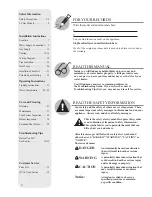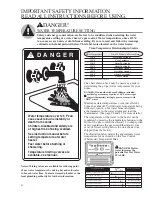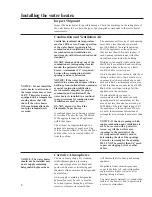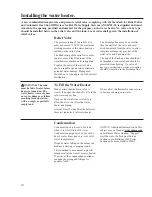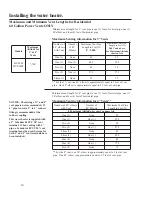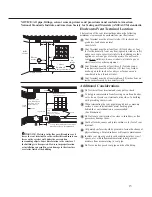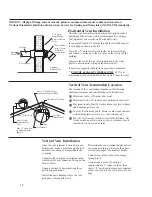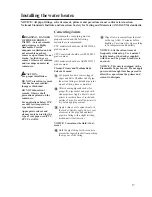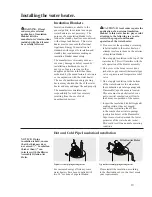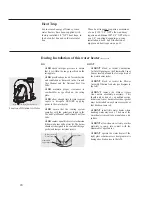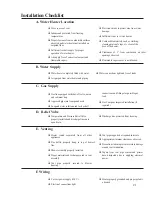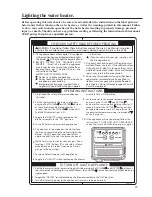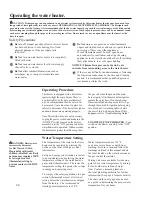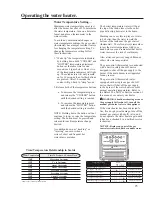
10
Installing the water heater.
A new combination temperature and pressure relief valve, complying with the Standard for Relief Valves
and Automatic Gas Shut-Off Devices for Hot Water Supply Systems, ANSI Z21.22, is supplied and must
remain in the opening provided and marked for the purpose on the water heater. No valve of any type
should be installed between the relief valve and the tank. Local codes shall govern the installation of
relief valves.
Relief Valve
The pressure rating of the relief valve
must not exceed 150 PSI, the maximum
working pressure of the water heater as
marked on the rating plate.
The Btuh rating of the relief valve must
equal or exceed the Btuh input of the
water heater as marked on its rating plate.
Position the outlet of the relief valve
above a suitable open drain to eliminate
potential water damage. Piping used
should be of a type approved for hot water
distribution.
The discharge line must be no smaller
than the outlet of the valve and must
pitch downward from the valve to allow
complete drainage (by gravity) of the
relief valve and discharge line.
The end of the discharge line should not
be threaded or concealed and should be
protected from freezing. No valve of
any type, restriction, or reducer coupling
should be installed in the discharge line.
To Fill the Water Heater
Make certain that the drain valve is
closed, then open the shut-off valve in the
cold water supply line.
Open each hot water faucet slowly to
allow the air to vent from the water
heater and piping.
A steady flow of water from the hot water
faucet(s) indicates a full water heater.
Do not allow the flammable vapor sensor
to become submerged in water.
WARNING: The tank
must be full of water before
heater is turned on. The
water heater warranty does
not cover damage or failure
resulting from operation
with an empty or partially
empty tank.
Condensation
Condensation can form on the tank
when it is first filled with water.
Condensation might also occur with a
heavy water draw and very cold inlet
water temperatures.
Drops of water falling on the burner can
produce a sizzling or pinging sound.
This condition is not unusual, and will
disappear after the water becomes heated.
If, however, the condensation continues,
examine the piping and fittings for
possible leaks.
NOTICE: Additional information on this
subject may be found at
www.rheem.com
,
under Rheem Water Heating, "Support",
scroll down to the Technical Service
Section and to Bulletins 1400 Series
Section and choose Bulletin #1402..
Summary of Contents for PowerVent AP14236
Page 34: ...34 Notes...
Page 35: ...35 Notes...


